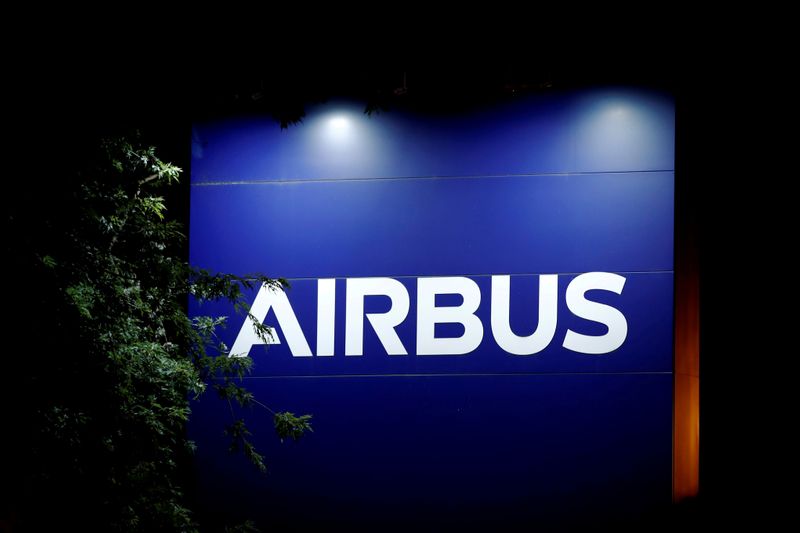By Tim Hepher
PARIS (Reuters) - Airbus is asking key suppliers to get ready for a further 18% increase in A320-family jet output by the end of 2022, on top of existing targets for this year, as airlines eye a partial return to normal travel, industry sources said.
The tentative new planning goal would lift output of the workhorse domestic and medium-haul jet, which competes with Boeing's (N:BA) 737 MAX, to 53 a month, they told Reuters.
The number being floated for the end of next year remains informal and Airbus has only committed so far to raising output in two steps to 45 a month by the end of 2021, from 40 now.
But it is the first concrete indication of the shape of recovery that the world's largest planemaker hopes to achieve for benchmark single-aisle jets beyond the end of this year, as it tries to replenish coffers emptied by the pandemic.
"We do not comment on speculation regarding the longer-term trajectory," an Airbus spokesman said.
"We see the market recovering to pre-COVID levels in the 2023-2025 timeframe, with single-aisle recovering first," he said, adding, "uncertainties remain".
Airbus, which had been enjoying record jet demand before the virus triggered widespread travel bans, cut output of its best-selling model by a third to 40 a month one year ago.
In January, it announced plans partially to restore output to 43 a month in the third quarter and 45 a month in the fourth.
Chief executive Guillaume Faury said last month Airbus aimed for a "steep ramp-up" in 2022 and 2023, without elaborating.
Airbus has yet to set even its 2021 targets in stone with firm contracts to all suppliers, suggesting part of the immediate increase will be addressed by using up inventory.
Suppliers say they need anything between 3 months and 18 months to get ready for changes in A320 production.
SHIFT IN DIRECTION
But Airbus' preliminary attempt to put numbers on end-2022 production are bolder than some analysts predicted.
"A rate increase of this scale would only be implemented if Airbus was very confident in its customers’ ability and willingness to take the planes, and that appears to be the case," Vertical Research Partners analyst Rob Stallard wrote.
"The focus now shifts to the aerospace industry's ability to abruptly shift direction from shrinking to growing, and to actually deliver to this higher rate."
Several suppliers and leasing industry executives have warned, however, of bumps ahead in restoring pre-pandemic production as smaller parts makers face cash shortages.
Airbus must also address industrial snags that held up dozens of deliveries even before COVID-19, they say.
Rating agency Moody's on Tuesday upped its outlook for global airlines to positive from negative, predicting improved demand over the next 12-18 months despite a growing health emergency in India and travel bans elsewhere.
Analysts say domestic travel in the United States and China is leading the recovery in medium-haul travel, with Europe's cross-border sector also gradually reopening.

Output of long-haul, wide-bodied jets remains depressed by a business travel slump and is not expected to recover soon.